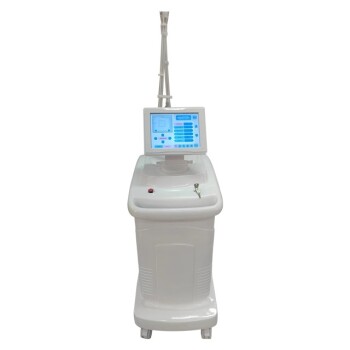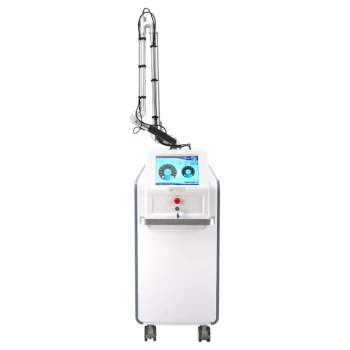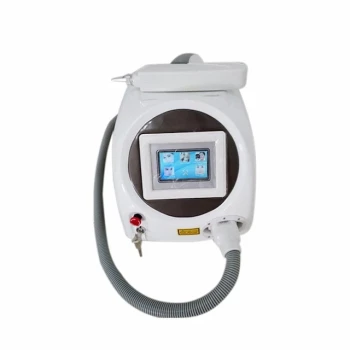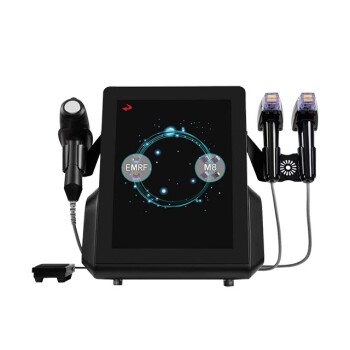The effect of a laser on the human body is not one single action, but a spectrum of interactions determined entirely by the laser's specific properties. Depending on its wavelength and power, a laser can be used to precisely cut and remove tissue, or it can be used to stimulate cells, reduce inflammation, and accelerate healing without breaking the skin. The outcome is a direct result of how light energy is delivered and absorbed by the body's tissues.
A laser is a tool for delivering focused light energy. Whether that energy vaporizes tissue, triggers a healing response, or has no effect at all depends on three key factors: the laser's wavelength, its power, and the specific molecules within the body that absorb it.
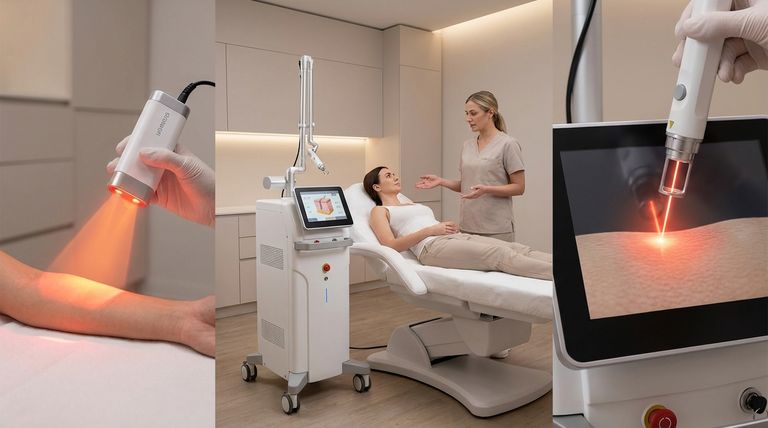
The Fundamental Interaction: Light into Biological Action
Every laser effect begins with a basic principle of physics: absorption. For a laser to have any effect, its light energy must be absorbed by specific molecules in the body known as chromophores.
What is a Chromophore?
A chromophore is any molecule that absorbs light of a particular color or wavelength. Key chromophores in the human body include melanin (in skin and hair), hemoglobin (in red blood cells), and water (present in all cells).
Wavelength Determines the Target
The laser's wavelength is precisely tuned to be absorbed by a target chromophore. For example, a laser used for hair removal uses a wavelength absorbed by melanin in the hair follicle, heating and destroying it while leaving the surrounding, water-filled skin largely unaffected. This principle is called selective photothermolysis.
The Two Poles of Laser Effects: Destruction vs. Stimulation
The primary difference between a laser that cuts and a laser that heals is its power level and how that energy is delivered.
High-Power Lasers: The Photothermal Effect
High-power lasers deliver a large amount of energy very quickly, overwhelming the target tissue. This rapid absorption of energy is converted into heat, leading to two main destructive effects.
- Coagulation: The heat denatures proteins and causes blood to coagulate. Surgeons use this to seal blood vessels and stop bleeding during an operation.
- Ablation: With even higher power or shorter pulses, the energy instantly vaporizes the water within cells. This process, known as photoablation, removes tissue layer by layer with extreme precision, as seen in LASIK eye surgery or skin resurfacing.
Low-Level Lasers: Photobiomodulation (PBM)
Low-level lasers operate at a much lower power, delivering energy that is absorbed by cells without causing heat damage. Instead of destroying tissue, this energy stimulates a cellular response.
- Cellular Energy Boost: The light energy is primarily absorbed by mitochondria, the powerhouses of the cell. This boosts the production of ATP, the body's main energy currency.
- Healing Cascade: This increase in cellular energy enhances natural healing processes. It can lead to reduced inflammation, increased blood circulation, pain relief, and accelerated tissue repair. This therapeutic effect is known as photobiomodulation (PBM), often used in physical therapy and sports medicine.
Understanding the Trade-offs and Risks
While incredibly versatile, the precision of lasers also comes with inherent risks and trade-offs that must be managed by trained professionals.
The Risk of Collateral Damage
The primary risk of high-power lasers is unintended thermal damage. If the wrong power or wavelength is used, or if the laser is not aimed correctly, it can burn non-target tissue. This is why eye protection is non-negotiable, as the eye's lens can focus even scattered laser light onto the retina, causing permanent blindness.
Penetration Depth Matters
Different wavelengths of light penetrate to different depths in the body. A laser for treating a surface-level skin condition must use a wavelength that is absorbed superficially. In contrast, a laser for deep tissue pain relief must use a wavelength that can pass through the outer layers of skin to reach the muscle or joint beneath.
Operator Skill is Paramount
A laser is a sophisticated instrument, not a simple switch. A trained operator must control the power, wavelength, pulse duration, and spot size to achieve the desired clinical outcome safely. Misuse of these parameters can lead to ineffective treatment or significant harm.
Making the Right Choice for the Goal
Understanding the mechanism of laser-tissue interaction allows you to see it not as a single technology, but as a highly adaptable tool.
- If your goal is surgical removal or cosmetic resurfacing: The key is using a high-power laser with a wavelength that is selectively absorbed by the target (like a tattoo's ink or a cell's water) to achieve precise ablation.
- If your goal is pain relief or accelerated healing: The key is using a low-level laser with a specific wavelength that penetrates to the target tissue to stimulate cellular activity through photobiomodulation.
- If your goal is safety: The key is recognizing that any laser's potential for harm is defined by its power and wavelength, and that proper training and protective equipment are essential.
Ultimately, a laser is a precise method of delivering energy, and its effect on the body is determined entirely by how that energy is configured and applied.
Summary Table:
| Laser Type | Primary Effect | Key Chromophore | Common Applications |
|---|---|---|---|
| High-Power | Photothermal (Ablation/Coagulation) | Water, Hemoglobin, Melanin | Surgery, Hair Removal, Tattoo Removal |
| Low-Level (LLLT) | Photobiomodulation (Cellular Stimulation) | Mitochondria | Pain Relief, Reduced Inflammation, Tissue Repair |
Ready to harness the power of professional laser technology for your clinic?
BELIS specializes in providing medical aesthetic clinics and premium beauty salons with advanced, safe, and effective laser equipment. Whether your goal is high-precision aesthetic treatments or therapeutic applications like pain relief and accelerated healing, our expert team can help you select the perfect technology to enhance your services and grow your business.
Contact BELIS today for a personalized consultation and discover the right laser solution for your practice.
Visual Guide

Related Products
- Fractional CO2 Laser Machine for Skin Treatment
- Fractional CO2 Laser Machine for Skin Treatment
- Pico Laser Tattoo Removal Machine Picosure Picosecond Laser Machine
- Hydrafacial Machine Facial Clean Face and Skin Care Machine
- Pico Picosecond Laser Machine for Tattoo Removal Picosure Pico Laser
People Also Ask
- What is a CO2 fractional laser good for? Dramatic Skin Rejuvenation for Wrinkles & Scars
- Is CO2 laser for all skin types? A Critical Guide to Skin Type Safety and Risks
- What is a fractional CO2 laser machine used for? A Guide to Advanced Skin Resurfacing
- How does fractional CO2 laser work? The Science Behind Powerful Skin Renewal
- How often should you do fractional CO2 laser? The 4-6 Week Rule for Optimal Results
